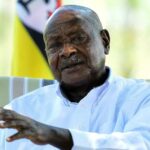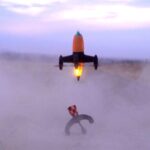#ThrowbackThursday – 11 August

What do a roller-skating rink, an animation patent, and a cheeky bombing joke all have in common? 11 August, of course!
Take a look at these three events that went down in history on 11 August:
1866 – No Rinky-Dink Operation
One hundred and fifty-six years ago, the first roller-skating rink in the United States of America (USA) was opened to the public.
It was opened by James Plimpton, an inventor who patented the four-wheel version of roller-skates three years earlier. Through the New York Roller Skating Association, he leased the dining room at the luxurious Atlantic House Hotel in Newport, Rhode Island, which had been used (then subsequently left vacant) by the US Naval Academy during the Civil War.
Plimpton then converted the dining room into a roller skating rink, which opened on 11 August. Although the sport of roller-skating took a while to become popular in the US, it began to become prominent in the 1870s as more and more rinks opened – Plimpton made a point to tour these rinks, offering weekly lessons for $2 to interested patrons.
By the 1880s, roller-skates – which were only available to rent – were being mass-produced, allowing patrons from all walks of life to buy them and participate in the now-favoured sport.
1914 – Animation’s First Steps
John Bray wasn’t nicknamed the “Henry Ford of American animation” for nothing: a pioneer in the animation industry, he filed a patent for animation.
Back in the days of yore, cartoons – characters, backgrounds and all – were typically retraced and redrawn (with slight alterations) on regular papers to create the effect of an animation.
A cartoonist and burgeoning animator, Bray outlined in his patent his innovative, artistic invention, which he referred to as “producing moving pictures.”
“By means of my invention, I am able to produce on a commercially practical scale a kind of moving picture: which may be designated as animated cartoons to distinguish them from the ordinary moving pictures. In the usual method, the object photographed is in motion and the exposures are made on the film or other sensitised surface with such rapidity that each successive picture shows the object in a slightly advanced position from that which it occupied in the last preceding picture.
“As a part of my improved process, I do not photograph an object in motion but photograph in succession a series of pictures or drawings which show the object, the successive pictures illustrating the successive positions which the object would take if it were in motion.”
In other words, Bray simplified the animation process by printing each background, leaving a blank space for the animation to be drawn. Not only did this reduce time, but it also cost less in comparison to hiring more animators than necessary to complete the animation in question.
Of course, Bray’s claim to fame doesn’t come without controversy: he apparently stole many of the techniques and methods for his patent from animator Windsor McCay. And when Bray managed to patent them, he tried to sue McCay himself for using them – luckily for McCay, he won the lawsuit and received royalties from Bray for years afterwards.
In spite of this controversy, it can’t be denied that Bray set the foundation for the animation industry for the years to come – not only in the USA, but worldwide as well.
1984 – A Bombed Joke
If cancel culture was a thing in the 1980s, then US President Ronald Reagan would certainly have been cancelled for an off-colour joke gone wrong.
It was 1984, the height of the Cold War between the USA and Russia (then known as the Soviet Union, or USSR): beginning in 1947, it was a period marked by ideological struggles and brinkmanship as each nation attempted to outdo each other and prove their power. As such, it was an incredibly tense time to live in.
So, one can imagine the panic that was stoked when Reagan made this proclamation via a leaked radio address: “My fellow Americans, I am pleased to tell you today that I’ve signed legislation that will outlaw Russia forever. We begin bombing in five minutes.”
In reality, Reagan was testing his microphone in preparation for a scheduled, weekly radio address made from his vacation home in California. Per eyewitness accounts, political aides, as well as technicians and a handful of reporters, who were in the room chuckled as he uttered that famous, off-the-cuff remark.
Unfortunately, that wisecrack didn’t fly with the folks in the USSR, who immediately ordered their forces to be on high alert in the event of any bombings. It prompted embarrassed US officials to quickly reassure their Russian counterparts, as well as distance the White House away from Reagan’s jape.
Back on home soil, commentators and citizens alike didn’t exactly find the joke in good taste, causing Reagan’s popularity numbers to dip. Fortunately for him, he managed to recoup his numbers just in time to win a second presidential term in 1985.





















